Lassen-Applegate Emigrant Trail
July 28-31, 2000
Introduction:
- Day 1: Imlay to Soldier Meadows
- Day 2: Soldier Meadors to Sawyer Camp
- Day 3: Sawyer Camp to Cedarville
Day 1:

The Lassen-Emigrant trail is marked with a sign near Imlay, Nevada, just next to the north side of Interstate 80. We had split into two groups of approximately 15 vehicles each, separated by about 45 minutes.

After a few miles, the road crosses the Humboldt River at the upper end of the modern Rye Patch Reservior impoundment and at this point the Lassen-Applegate Trail splits off to the northwest while the California trail follows the river to the west.

After a gradual dusty climb out of the river valley, we reach the first source of water, that was a popular stop for the emigrants.

Up and over the pass we drop down into RabbitHole Springs. Modern development has created the dam that formed the pool, in the 1850's the springs were only a few holes dug out of the clay. This would be the last water the emigrants had before reaching the Black Rock Desert.
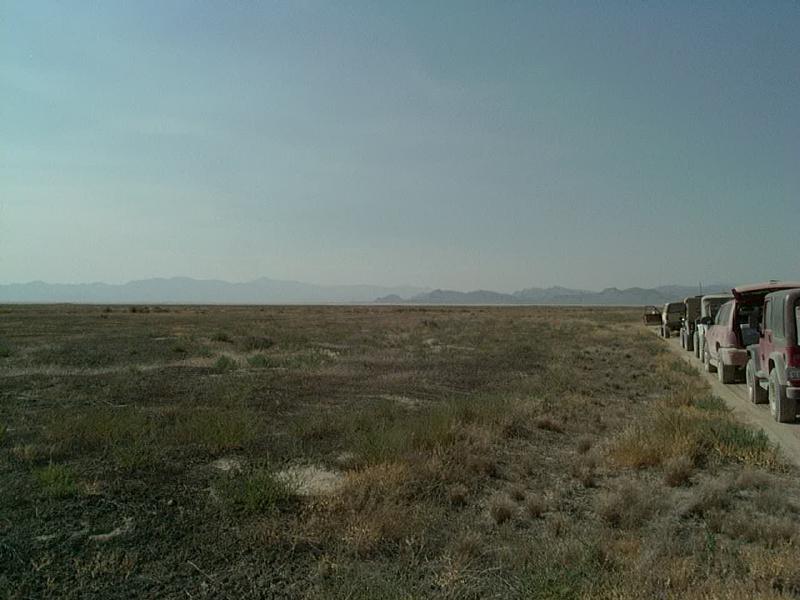
The Black Rock Mountains are visible directly in front of the vehicles as we get ready to enter the desert after turning off the service road the parallels the railroad tracks near Sulphur, NV.

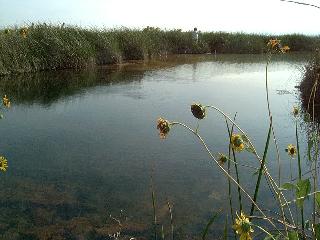
After a dry crossing of the Quinn River, we reach the hot springs in Black Rock. These springs are not too hot.
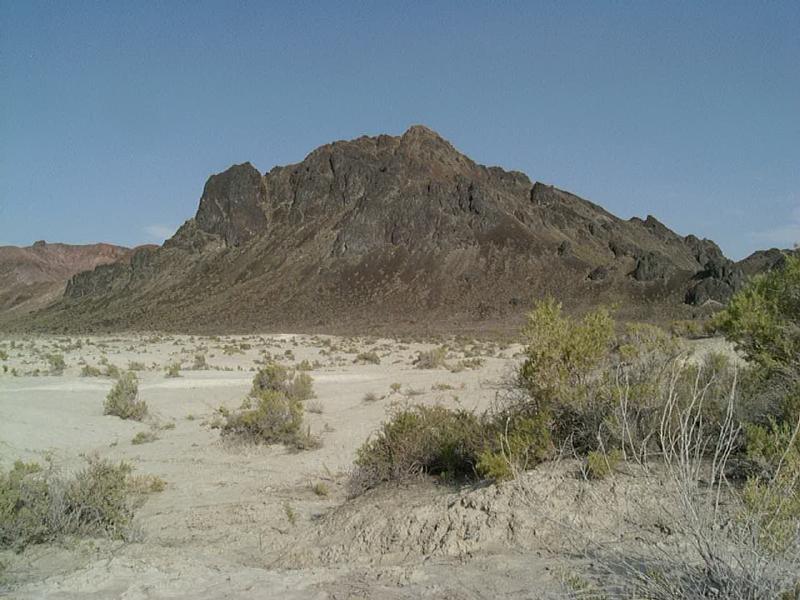
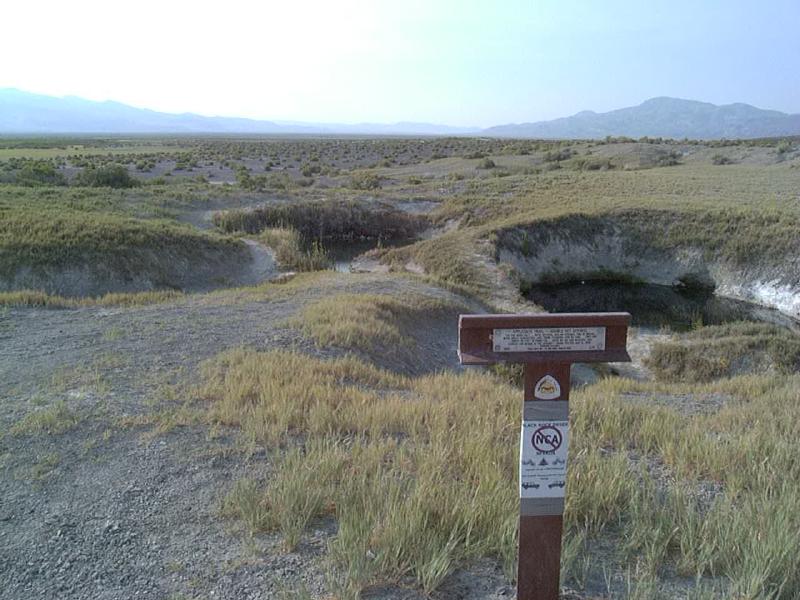
Next we stop at Double Hot Springs, which offord a fine view of Black Rock.

Ladies and gentlemen; Start Your Engines! Here our group gets ready for a high speed, 10 mile dash across the Black Rock playa, we fan out side by side and make a bee-line for the county road on the west shore of the playa.
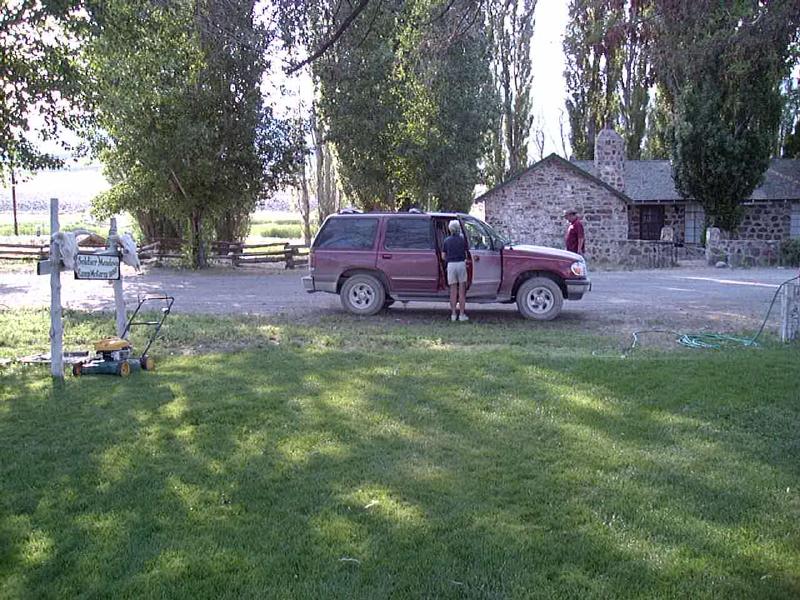
After reaching the county road, we head north up the valley for 25 miles or so before reaching the greenery of Soldier Meadows, site of the old Fort McGarry. This is one of the first water source the emigrants would have had after leaving the Black Rock desert, 30 miles back. This is a working cattle ranch and it offers accomodations for a number of guests. A few of the original 1980's buildings remain. The crew at the ranch put on a studendous BBQ tri-tip and New York steak dinner with all the fixings. If you come to the ranch in the summer, forget about daylight savings time. The ranch runs on "ranch time" which is PST all year around!
It appears Soldier Meadows Ranch no longer has any public facilities as of 2018 according to a post on their Facebook page.
[Return to the top of this page]Day 2:
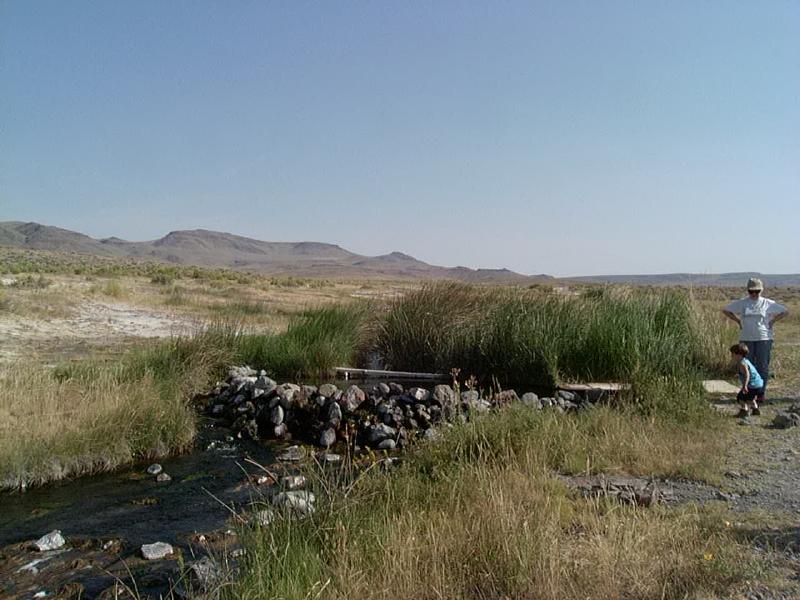
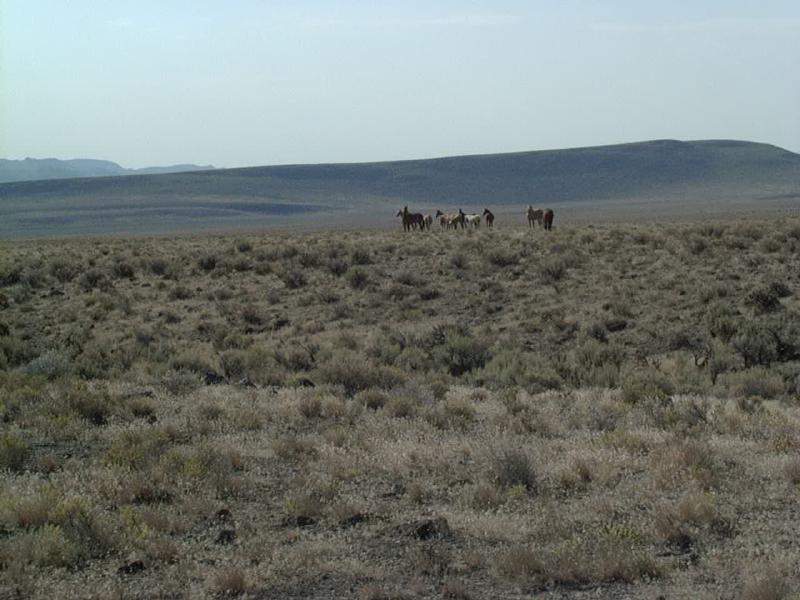


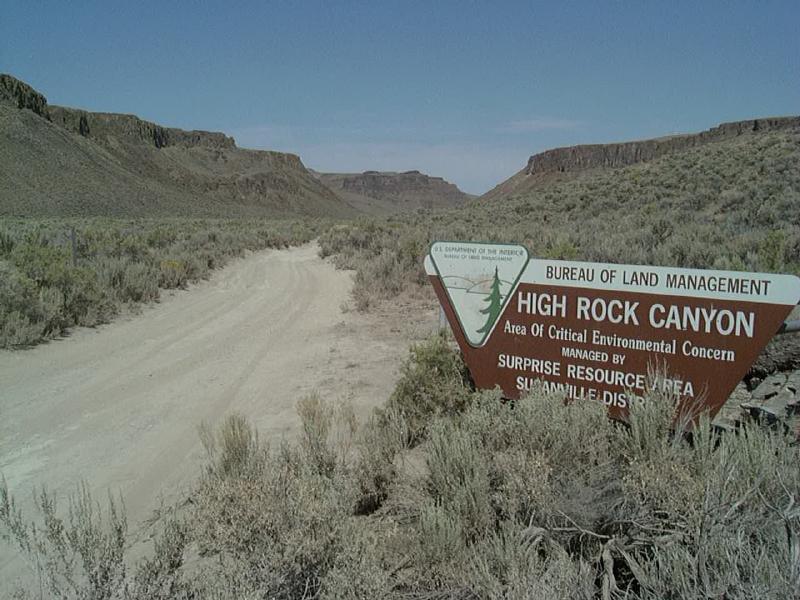

[Return to the top of this page]
Day 3:
Sorry, didn't shoot any photos on Day 3 as I recall. We did stop at a little side road just past Sawyer (Steven's?) Camp where the ground was covered in Obsidian. Big softball to basketball sized lumps of black rock.
[Return to the top of this page][Author: Roger Brown]
[Initial Creation: 03.AUG.2000]
[Last updated: 29.July.2024 ]